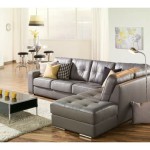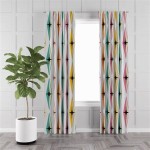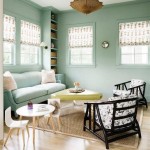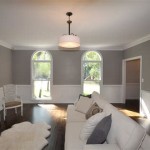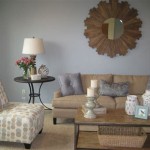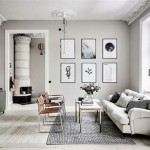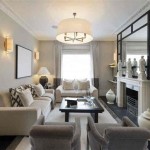Living Room Ideas: Blending Modern and Vintage Aesthetics
The fusion of modern and vintage styles in interior design, particularly in the living room, represents a compelling approach to creating spaces that are both timeless and contemporary. This blend allows for the juxtaposition of clean lines and minimalist elements with the character and charm of aged pieces, resulting in a living space that feels both curated and comfortable. Achieving a harmonious balance between these seemingly disparate styles requires a thoughtful understanding of color palettes, furniture selection, and accessory placement.
Understanding the Core Elements
The "modern vintage" style isn't simply about throwing old and new things together. It's a carefully considered design approach that prioritizes harmony and balance. To achieve this, it's essential to grasp the core principles of both modern and vintage aesthetics individually before attempting to merge them. Modern design, at its heart, emphasizes simplicity, functionality, and clean lines. Think of geometric shapes, open spaces, and the absence of excessive ornamentation. Vintage, on the other hand, celebrates history and character. It encompasses a wide range of styles, from the ornate details of the Victorian era to the streamlined forms of mid-century modern, each with its own unique charm. The key is to identify common threads and complementary elements between these styles.
Modern elements often incorporate neutral color palettes, such as whites, grays, blacks, and beiges. These provide a clean and uncluttered backdrop that allows vintage pieces to stand out. Materials commonly used in modern design include steel, glass, and concrete, all of which contribute to a sleek and minimalist aesthetic. Furniture is typically functional and unadorned, prioritizing comfort and usability.
Vintage elements, conversely, can introduce a wider range of colors, textures, and patterns. Think of rich jewel tones like emerald green and sapphire blue, or softer pastels like blush pink and mint green. Materials like wood, velvet, and leather are commonly associated with vintage style, lending warmth and character to the space. Vintage furniture often features intricate details, such as carved wood, tufted upholstery, and decorative hardware. Understanding these core differences and overlaps is crucial for creating a cohesive and visually appealing living room.
Key Considerations for Furniture Selection
Selecting furniture is arguably the most impactful aspect of creating a modern vintage living room. The goal is to curate a collection of pieces that complement each other without feeling overly matchy-matchy or disjointed. A good strategy is to start with a modern foundation and then introduce vintage accents. This allows the clean lines of modern furniture to anchor the space, while the vintage pieces add character and personality.
Consider a modern sofa upholstered in a neutral fabric, such as linen or cotton. This provides a comfortable and versatile seating option that can be easily paired with vintage accent chairs or a coffee table. Look for vintage chairs with interesting shapes or details, such as a mid-century modern armchair with tapered legs or a Victorian-era bergère chair with carved wood accents. Upholstering these chairs in a modern fabric can further bridge the gap between the two styles. The coffee table can be another opportunity to introduce a vintage element. A reclaimed wood coffee table with steel legs, for example, blends the natural warmth of wood with the industrial aesthetic of steel.
Avoid overly ornate or fussy furniture that can overwhelm the modern elements of the room. Instead, focus on pieces that have a sense of history and character without being visually distracting. Paying attention to scale and proportion is also important. A large, overstuffed vintage sofa might look out of place in a small, modern living room, while a delicate antique chair might get lost in a large, open space. Carefully consider the size and shape of each piece of furniture in relation to the overall dimensions of the room.
Incorporating Color, Texture, and Accessories
Color, texture, and accessories play a vital role in bringing the modern vintage aesthetic to life. These elements can be used to create depth, visual interest, and a sense of personality in the living room. When it comes to color, a neutral palette is often the best starting point. White walls and light-colored floors create a bright and airy backdrop that allows vintage pieces to shine. However, this doesn't mean that color should be avoided altogether. Strategic pops of color can be introduced through accessories, artwork, and textiles.
Consider adding a vibrant vintage rug to anchor the seating area or hanging a colorful abstract painting on the wall. Throw pillows and blankets in rich jewel tones can add warmth and visual interest to a neutral sofa. Texture is another important element to consider. Mixing different textures can create a sense of depth and complexity in the room. Pair a smooth leather sofa with a chunky knit blanket or a velvet armchair with a textured linen cushion.
Accessories are the finishing touches that tie the whole room together. Vintage accessories can be used to add personality and character to the space. Think of antique mirrors, vintage lamps, or decorative objects collected over time. Display these objects on shelves, coffee tables, or side tables to create vignettes that tell a story. Remember that less is often more. Avoid cluttering the space with too many accessories, as this can detract from the overall aesthetic. Choose a few key pieces that have special meaning or that complement the overall design scheme. Plants are also a great way to add life and vibrancy to the living room. Greenery can soften the hard lines of modern furniture and bring a touch of nature indoors. Consider placing a large potted plant in a corner of the room or hanging a few trailing plants from the ceiling.
Lighting as a Defining Feature
Lighting is a crucial element often overlooked in interior design, but it significantly impacts the overall ambiance and functionality of a living room. In a modern vintage setting, the right lighting can enhance the unique characteristics of both styles, creating a cohesive and inviting space. Layering lighting is essential, encompassing ambient, task, and accent lighting to meet diverse needs and create visual depth.
Ambient lighting provides overall illumination to the room. A modern approach might involve recessed lighting or sleek track lighting with adjustable heads, offering a clean and minimalist aesthetic. Complementing this with a vintage-inspired chandelier or pendant light adds a touch of elegance and historical charm. Choose a fixture with clean lines and simple detailing to avoid overwhelming the modern elements. Task lighting focuses on specific areas for reading, writing, or other activities. A modern floor lamp with an adjustable arm provides concentrated light without compromising the overall design. Pairing this with a vintage desk lamp or side table lamp introduces a unique character while maintaining functionality. The vintage lamp can feature interesting materials like brass or glass, adding a tactile element to the space.
Accent lighting highlights specific architectural features, artwork, or decorative objects. Modern LED strip lights can be used to illuminate artwork or emphasize the clean lines of a bookcase. Combining this with vintage sconces or picture lights adds a touch of historical drama and highlights the textures and colors of vintage pieces. Candles and dimmable lights can also enhance the ambiance, creating a warm and inviting atmosphere, particularly in the evening. The color temperature of the lightbulbs should also be considered. Soft white light is generally preferred for living rooms as it creates a warmer and more inviting atmosphere, complementing both modern and vintage styles.
Flooring and Wall Treatments
The selection of flooring and wall treatments in a living room profoundly impacts the overall aesthetic, serving as the foundation and backdrop for furniture and decorative elements. In a modern vintage design scheme, these elements are crucial for creating a harmonious blend that respects both styles. For flooring, consider options that offer durability and timeless appeal. Hardwood flooring, particularly in lighter shades like oak or maple, is a versatile choice that complements both modern and vintage furniture. Using a matte finish can enhance the natural beauty of the wood while avoiding an overly polished or contemporary look. To introduce a vintage touch, consider incorporating a large area rug with a traditional pattern or texture. Persian rugs, kilim rugs, or even vintage shag rugs can add warmth, color, and character to the room.
For wall treatments, a neutral color palette is often the best approach, providing a clean and uncluttered backdrop that allows furniture and accessories to stand out. White, off-white, and light gray are popular choices that reflect light and create a sense of spaciousness. To add visual interest, consider incorporating a textured wall treatment, such as wallpaper with a subtle pattern or a shiplap wall. Wallpaper can introduce a vintage element with its patterns, like damask or floral prints, while shiplap offers a rustic charm that complements both modern and vintage styles.
Another option is to create an accent wall using a bold color or material. A deep blue or green accent wall can add drama and depth to the room, while a brick or stone wall can introduce a rustic and industrial feel. Consider the existing architectural features of the room when selecting wall treatments. If the room has original plaster walls or exposed brick, consider preserving these features to enhance the vintage character. If the room lacks architectural detail, consider adding moldings or trim to create a more traditional look. The goal is to create a balance between modern and vintage elements, ensuring that the flooring and wall treatments complement the overall design scheme.

Chic Nostalgia Unveiling Modern Vintage Living Room Ideas West Magnolia Charm

Vintage Modern Interior Design Ideas Blending Timeless Charm With Contemporary Style Decorilla Online

Vintage Modern Interior Design Ideas Blending Timeless Charm With Contemporary Style Decorilla Online

21 Antique Vintage Home Decor Ideas Extra Space Storage

The Modern Vintage Interior Design Style Decoholic

Living Large In A Small House Llc How To Decorate Your Space With Vintage

How To Decorate Your Home By Mixing Modern Classic And Vintage Pieces Wit Delight Designing A Life Well Lived

Vintage Meets Modern Living Room Decorating Ideas

Chic Nostalgia Unveiling Modern Vintage Living Room Ideas West Magnolia Charm

Retro Living Room Ideas And Decor Inspirations For The Modern Home Decoist

